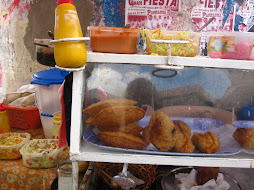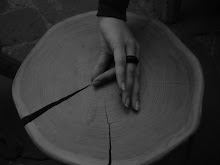 The long-standing home where I lived on Azurduy street in Sucre was a gorgeous reminder of Bolivia's bygone glory days. Like most homes it is built of mud brick, plastered, painted white, has housed many generations of the same family (the Palacios), and was designed around a beautifully flowere courtyard. We lived on the secon floor with a veranda open to the courtyard, which we clutered with pots of jasmine, laurel, strawberries, succulents, grapes, olives, and rosemary bought from the plant and flower market that ran alongside the city's enormous cemetery.
The long-standing home where I lived on Azurduy street in Sucre was a gorgeous reminder of Bolivia's bygone glory days. Like most homes it is built of mud brick, plastered, painted white, has housed many generations of the same family (the Palacios), and was designed around a beautifully flowere courtyard. We lived on the secon floor with a veranda open to the courtyard, which we clutered with pots of jasmine, laurel, strawberries, succulents, grapes, olives, and rosemary bought from the plant and flower market that ran alongside the city's enormous cemetery.The rosemary was a dry, depressing twig, with more bark than anything else. Seeing no hope for the plant in our home, and my roomate's impending trip to one of Sucre's many "dumps," I decided to give it one last hurrah in the form of Rosemary, Lemon Shortbread.
At the main city marke I bought lemons from a Chola, sugar scooped from an enormous woven costal, then passed the "Pil" storefront for butter. At home, the butter went out onto the roof to soften (I always used this trick because the teracotta tiles were level with our back kitchen window, and caught the perfect sun), and I collected the last few aromatic sprigs of Rosemary from the dry, sad plant. And then to work on my first ever shortbread.Rosemary, Lemon Shortbread
 |
| With no electric mixer, my roommate and I would take turns beating butter for each of my new baking experiments |
1C (2 sticks) Butter
3/4C Sugar
1 Egg and 1 White
1t Vanilla
1T Rosemary, finely chopped
2t grated Lemon Zest
2 1/4C Flour
1/2t Salt
-Beat the butter and sugar until pale and fluffy, and mix in eggs and vanilla.
-Add rosemary, lemon zest, salt and flour, mix thoroughly.
Divide dough in half, and shape into loggs 1 1/2" thick. Chill well in freezer or refrigerator.
-Preheat oven to 375°F.
-Brush a log with egg white and roll in sugar. Then cut into 1/4" slices, and place on a parchment-lined baking sheet.
-Bake for 12-15 minutes or until edges are golden brown. Cool on wire rack before serving.
 |
| This shortbread (and the lavender version soon to come) have become staples in our farm house, and are the best use for rosemary that I can imagine. Provecho! |


























